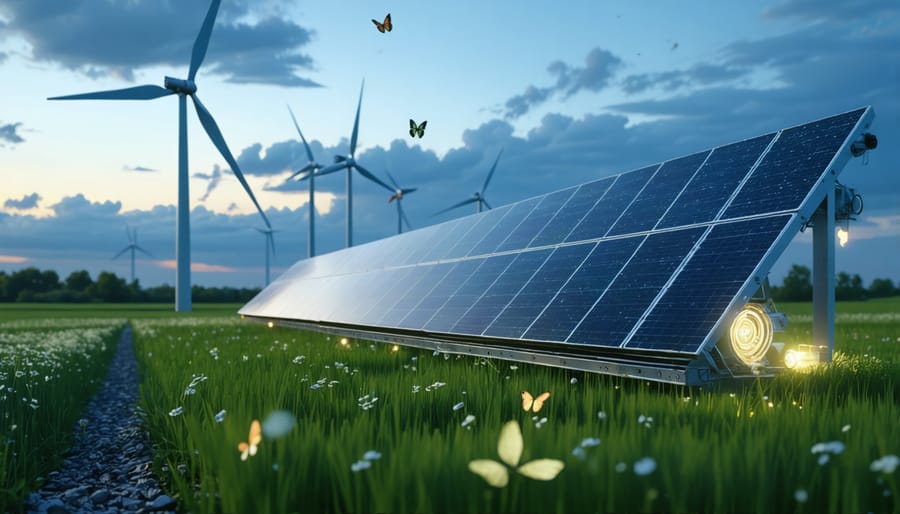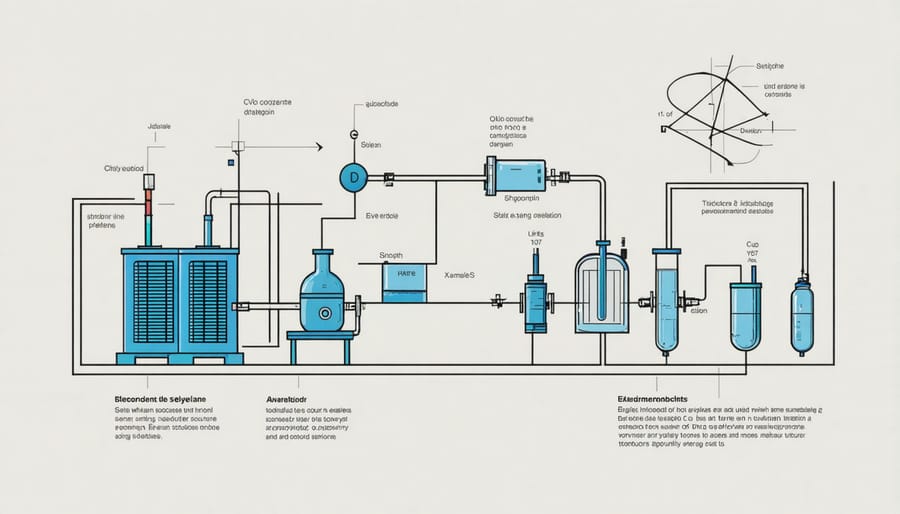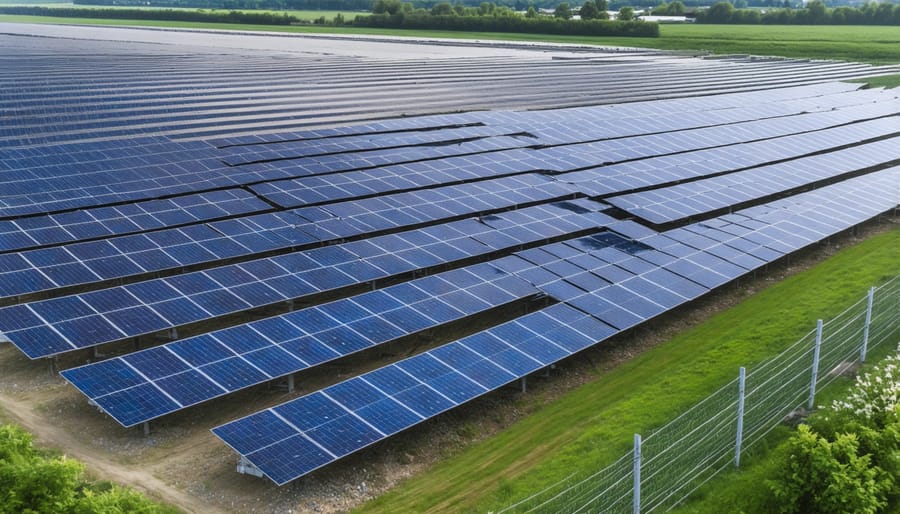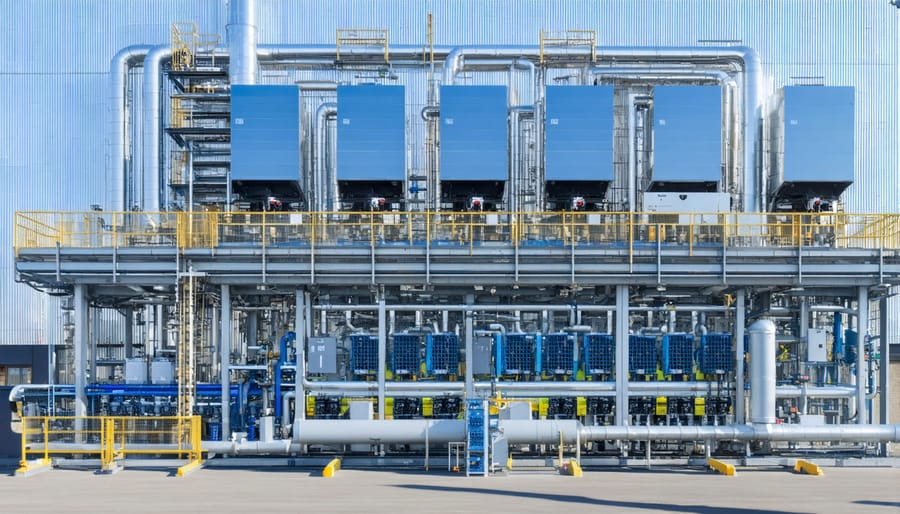Zinc Energy Storage: The Sustainable Battery Solution Transforming European Power Grids

Zinc energy storage emerges as a groundbreaking solution in Europe’s transition to sustainable energy systems, offering a safer, more abundant alternative to conventional battery technologies. This innovative storage method harnesses zinc’s unique electrochemical properties to capture and release energy efficiently, while addressing critical challenges of cost, safety, and environmental impact that have long constrained renewable energy adoption.
Unlike lithium-ion batteries, zinc-based storage systems utilize Earth-abundant materials, reducing supply chain vulnerabilities and environmental concerns while delivering impressive performance metrics. With energy densities reaching 50-100 Wh/kg and cycle lives exceeding 5,000 cycles, these systems provide reliable storage solutions for both residential and industrial applications across the European market.
Recent technological breakthroughs have enhanced zinc storage efficiency to over 80%, making it increasingly attractive for grid-scale implementation and renewable energy integration. As European nations accelerate their sustainability targets, zinc storage technology offers a compelling combination of performance, safety, and environmental responsibility that aligns perfectly with the continent’s ambitious clean energy goals.
This affordable, scalable technology represents not just an energy storage solution, but a crucial stepping stone toward a more resilient and sustainable European energy landscape.
Why Zinc Energy Storage is Revolutionizing Grid Resilience
The Science Behind Zinc Storage Systems
Zinc energy storage systems operate through a reversible electrochemical process that converts electrical energy into chemical energy and back again. At the heart of these systems is a zinc-based battery that utilises zinc metal as the negative electrode (anode) and an air electrode as the positive cathode, with an alkaline electrolyte facilitating ion movement.
During charging, electrical energy drives the conversion of zinc oxide to metallic zinc at the anode, while oxygen is released at the cathode. When discharging, the process reverses: metallic zinc oxidises, releasing electrons that flow through an external circuit to provide power, while oxygen from the air reacts at the cathode.
What makes this technology particularly innovative is its use of abundant, non-toxic materials and its ability to achieve high energy density at relatively low costs. The system’s efficiency typically ranges between 65-70%, with advanced designs pushing towards 75%. Modern zinc storage systems incorporate sophisticated control systems that monitor and optimise the charging/discharging cycles, preventing issues like dendrite formation and ensuring longer operational lifespans.
These systems can operate effectively across various temperature ranges, making them suitable for diverse European climate conditions.

Key Benefits for European Energy Networks
Zinc energy storage systems offer unique advantages for European power networks, particularly in supporting the continent’s ambitious renewable energy targets. These systems enhance energy resilience while addressing specific challenges faced by European grid operators.
The technology’s scalability makes it ideal for both urban and rural applications across diverse European landscapes. In densely populated areas, zinc storage systems require minimal space while providing substantial storage capacity. Their non-flammable nature aligns perfectly with strict European safety regulations, making them suitable for installation in residential areas and industrial zones alike.
Furthermore, zinc storage systems complement Europe’s growing renewable energy infrastructure by efficiently managing intermittent solar and wind power generation. They excel in frequency regulation and peak shaving, crucial functions for maintaining grid stability across interconnected European networks.
The systems’ long lifecycle and high recyclability align with EU circular economy principles, while their cost-effectiveness supports the economic feasibility of renewable energy projects. This makes zinc storage particularly attractive for regions transitioning away from traditional power sources while maintaining grid reliability.
Integration with Renewable Energy Systems
Solar Power Integration Solutions
Zinc energy storage systems excel in solar power integration, offering a reliable solution for managing intermittent renewable energy generation. These systems effectively capture excess solar production during peak daylight hours and distribute stored energy when needed, typically during evening peaks or cloudy periods.
For residential solar installations, zinc storage technology provides an efficient means of maximising self-consumption. European homeowners can store surplus solar energy generated during sunny afternoons, using it later for evening household demands. This approach typically results in energy autonomy rates of 70-85%, depending on system sizing and consumption patterns.
In commercial applications, zinc storage systems help businesses optimise their solar investments by managing peak loads and providing backup power. The technology’s scalability makes it particularly suitable for medium to large-scale solar installations, from retail centres to industrial facilities. Many European businesses have successfully implemented these integrated solutions, reducing grid dependency while maintaining reliable operations.
The integration process is straightforward, with modern zinc storage systems featuring advanced power electronics that ensure smooth interaction with existing solar inverters and monitoring systems. This compatibility extends to both new installations and retrofits of existing solar arrays, offering flexibility for various implementation scenarios.
Performance monitoring and smart energy management systems further enhance the efficiency of these integrated solutions, allowing users to track energy flows and optimise usage patterns in real-time.

Grid Stabilization Capabilities
Zinc energy storage systems play a crucial role in creating resilient energy systems by effectively managing the intermittent nature of renewable energy sources. These systems excel at providing rapid response times and flexible power output, making them ideal for grid stabilization applications.
When solar or wind generation fluctuates, zinc storage systems can respond within milliseconds to maintain grid frequency and voltage stability. This capability is particularly valuable in European markets, where the increasing integration of renewable energy sources demands robust energy storage solutions.
The technology’s ability to perform multiple grid services simultaneously sets it apart. During peak demand periods, zinc storage systems can discharge stored energy to prevent grid overload, while during low demand periods, they can absorb excess renewable energy that would otherwise be curtailed. This dual functionality helps maintain grid balance and enhances overall system reliability.
In regions with high renewable energy penetration, zinc storage installations have demonstrated impressive performance in frequency regulation and voltage support. The systems can operate continuously for extended periods, providing consistent backup power during unexpected grid events and helping to prevent blackouts.
Moreover, zinc storage systems contribute to grid resilience through their scalability and modular design, allowing grid operators to adjust storage capacity based on evolving network demands and renewable energy integration targets.
Environmental and Economic Impact
Sustainability Advantages
Zinc energy storage systems offer significant environmental advantages over conventional battery technologies, making them a compelling choice for sustainable energy solutions. Unlike lithium-ion batteries, zinc-based systems rely on abundantly available materials that are fully recyclable and non-toxic. The zinc used in these systems can be recycled indefinitely without losing its electrochemical properties, contributing to a circular economy approach.
The production of zinc batteries generates a substantially lower carbon footprint compared to traditional energy storage solutions. This reduced environmental impact stems from simpler manufacturing processes and the use of readily available materials. Additionally, zinc-based systems don’t require rare earth elements or critical raw materials, reducing the environmental strain from mining operations.
Safety is another key sustainability advantage, as zinc energy storage systems don’t pose fire risks or require complex cooling systems. This eliminates the need for energy-intensive temperature management infrastructure. The technology’s non-toxic nature means there’s no risk of harmful chemical leakage into soil or water systems, protecting local ecosystems.
The long lifecycle of zinc storage systems also contributes to their sustainability profile, as fewer replacements are needed over time, resulting in reduced waste and resource consumption. This durability, combined with their environmental benefits, makes zinc storage an increasingly attractive option for Europe’s renewable energy transition.
Cost-Effectiveness Analysis
Zinc-based energy storage systems present a compelling economic proposition when compared to traditional battery storage costs. Initial investment ranges from €250 to €400 per kWh, positioning it favorably against lithium-ion alternatives. The system’s longevity, typically 15-20 years, significantly enhances its lifetime value proposition.
Operating costs remain notably low, with minimal maintenance requirements and no need for complex thermal management systems. The abundance of zinc as a raw material ensures stable pricing, unlike the volatile cost fluctuations seen with lithium and cobalt. European businesses implementing zinc storage solutions typically achieve ROI within 5-7 years, depending on energy usage patterns and local electricity rates.
The technology’s scalability further improves its cost-effectiveness, as larger installations benefit from economies of scale. Additional value derives from zinc’s complete recyclability, reducing end-of-life costs and supporting circular economy initiatives. When factoring in potential grid services revenue and peak demand reduction, zinc storage systems can deliver annual cost savings of 15-25% on energy expenses while providing reliable backup power capabilities.
Implementation Success Stories
Commercial Applications
Several European businesses have successfully implemented zinc energy storage systems, demonstrating the technology’s commercial viability. In Sweden, a manufacturing facility integrated a 2MWh zinc-air storage system in 2022, reducing its peak demand charges by 40% while providing crucial backup power for critical operations. The system’s safe, non-flammable nature proved particularly valuable in the industrial setting.
In Germany, a commercial solar installation combined with zinc-based storage helped a medium-sized retail chain achieve 85% energy self-sufficiency across five locations. The project, completed in 2021, showcases how zinc storage systems can effectively manage intermittent renewable energy sources while maintaining stable power supply throughout business hours.
The Netherlands presents another compelling case study, where a data center deployed a 500kWh zinc storage system to enhance its renewable energy utilization. The installation not only improved the facility’s sustainability metrics but also provided a cost-effective alternative to traditional lithium-ion solutions.
A notable innovation hub in Denmark implemented a zinc-hybrid flow battery system in 2023, demonstrating how the technology can support smart grid initiatives while meeting strict urban safety regulations. The project achieved a 30% reduction in energy costs while maintaining a minimal environmental footprint.
These implementations highlight zinc storage’s growing role in European commercial energy solutions, particularly in scenarios requiring long-duration storage and enhanced safety features.
Utility-Scale Projects
Several groundbreaking utility-scale zinc energy storage projects across Europe demonstrate the technology’s growing prominence in grid-scale applications. In Germany, a 20MWh zinc-air storage facility integrated with a wind farm provides critical grid stabilization services while showcasing the technology’s scalability. This installation has successfully managed peak load shifting and renewable energy integration since 2021.
The Netherlands hosts an innovative 40MWh zinc-hybrid storage system that supports industrial operations while offering microgrid solutions for local communities. The project demonstrates exceptional round-trip efficiency and minimal environmental impact, serving as a model for sustainable energy storage.
In Spain, a consortium of utility companies has implemented a 15MWh zinc-based storage facility connected to a solar farm, providing reliable power distribution during peak demand periods. The system’s modular design allows for future capacity expansion while maintaining operational efficiency.
Notable implementations also include a 25MWh facility in Denmark that combines zinc storage technology with smart grid management systems. This installation has achieved remarkable success in reducing grid congestion and optimizing renewable energy utilization, with documented cost savings of approximately 15% compared to traditional storage solutions.
These projects consistently demonstrate zinc storage technology’s ability to deliver reliable, sustainable, and cost-effective energy management at utility scale, while supporting Europe’s transition to renewable energy.

Zinc energy storage technology stands at the forefront of Europe’s sustainable energy revolution, offering a promising solution for the continent’s growing energy storage needs. With its abundant material supply, proven safety record, and competitive cost structure, zinc-based systems are positioned to play a crucial role in achieving EU climate goals while supporting grid stability and renewable energy integration.
The future outlook for zinc energy storage appears particularly bright, with ongoing technological improvements enhancing efficiency and reducing costs. European research institutions and companies continue to innovate in this space, developing more advanced electrolytes and optimizing system designs. Market projections suggest significant growth in zinc storage deployment across residential, commercial, and industrial applications over the next decade.
As sustainability becomes increasingly central to European energy policy, zinc storage systems offer a compelling alternative to traditional solutions. Their minimal environmental impact, coupled with strong performance characteristics, makes them an attractive option for businesses and homeowners alike. With continued investment in research and development, zinc energy storage technology is set to become an integral part of Europe’s clean energy infrastructure, supporting the transition to a more sustainable and resilient power grid.
Leave a Reply